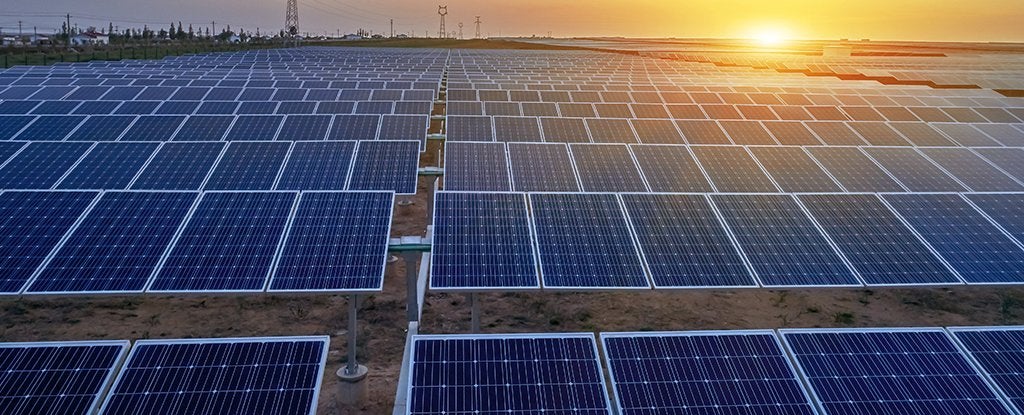
Everywhere you look, you see more and more solar panels popping up. Most people already know that solar panels generate electricity and that they can be installed on homes and businesses in order to save money on electric bills.
But if you’re the curious type and find yourself asking, “How do solar panels work?”, keep on reading, as we uncover some of the mystery surrounding solar power in this blog.
How do solar panels work: starting from the beginning
First, let’s look at the sun. It is a giant nuclear reactor 93 million miles away from us that is hurling energy in every direction in the form of tiny packets called photons.
Enough of those photons reach Earth’s surface every hour to provide more electricity than we use all around the world in an entire year.
The trick is harnessing that energy in a useful way - which is exactly what solar panels do.
How do solar panels work to convert sunlight into electricity?
A solar panel is a collection of many photovoltaic (PV) cells that are covered with protective glass and held together with a metal frame. This is why the official name for a solar panel is “PV module.” These PV solar cells are made of semiconductor material, typically silicon, that is sliced super thin.
Each PV cell has a negative layer and a positive layer. The negative layer has extra electrons and the positive layer has space for those electrons. Electricity is moving electrons so for a solar panel to generate electricity we just need some energy to bump those electrons loose so they will flow from the negative layer to the positive layer.
Cue the sun. The photons from the sun that are hitting our planet’s surface all day long are the key to answering the question of how do solar panels work.
The energy from those photons knock loose the electrons in the negative side of the PV cell and get them moving, which means we now have electricity flowing. This is called the Photovoltaic Effect.
But that’s just the beginning of the story of understanding how solar panels work because those electrons need a pathway to follow and the electricity has to be in a useful form. So, how does this happen?
The pathway we create for the electrons is called a circuit. When they leave the negative layer of the PV cell, we want them to flow through our loads (like our lights and appliances) so the electrons can give energy to those loads as they make their way to the positive layer of the PV cell.
The flow of electricity is important
The solar panels produce Direct Current (DC) electricity but the electricity generation that we use in our homes is Alternating Current (AC). To fix this problem, we add an inverter to our circuit. Then, the inverter converts the DC power to AC power.
The inverter is a key factor in determining how solar panels work because, without an inverter in our PV system, we can’t do much with the power generated from the solar panels.
Inverters come in many shapes and sizes, and the one you should use depends on a few factors, including:
- Cost: Microinverters result in more output but are generally more expensive
- Whether or not a part of the solar array will be shaded: Any shading results in major drops in output if a string inverter is being used
The two main types of inverters are microinverters and string inverters.
Microinverters
Microinverters are small devices that can be mounted right under a solar panel. Microinverters are designed to handle the electrical power from just one (or sometimes two) solar panels, converting the DC to AC right on the spot. Some manufacturers even make solar panels with microinverters integrated into the design, and call them "AC modules."
String inverters
Larger "string" inverters, also known as central inverters, are designed to convert the DC power of many PV modules. These come in sizes as small as 3 kilowatts which would work for 10–12 solar panels or as large as 5 megawatts which can convert the power from as many as 20,000 solar panels.
With these types of string solar inverters, you would connect the solar panels together in series of “strings” and feed a DC voltage to the inverter. The inverter then bumps it down to the AC voltage that is appropriate for the home or business where the system is being installed.
What is solar efficiency and what does it really mean?
An efficiency rating measures the percentage of sunlight hitting the solar cell that gets converted into usable electricity. The greater the efficiency, the less surface area it will take for the solar panels to meet your energy requirements—but the higher the price tag.
Some people associate greater efficiency levels with higher-quality panels, but this isn’t necessarily true. High efficiency means your solar PV system will utilize less space on your rooftop. Therefore, those who live in high-density areas and have very limited space for solar are generally more concerned with efficiency levels.
How do solar panels work: tying it all together
To complete the story of how solar panels work, in a standard, grid-tied system, the AC electricity from the inverter feeds into the home or commercial building. That AC power runs the electrical loads like lights, appliances, computers, air conditioners and machinery.
With net metering, if the solar panels are generating more power than those loads are using, then the excess energy is fed to the utility company. This excess power is tracked by the electric meter and the utility company will give you credit for it. If the loads need more power than the solar panels are generating, then the extra power needed comes from the utility company and you use up the credits that you have built up.
At the end of the month, the electric company will settle up the credits for the electricity you gave them and the charges for the electricity you used.
You can read more about how net metering works here.
Now that you have the answer to “How do solar panels work?”, you can get going on finding a local solar company to install some for you!
